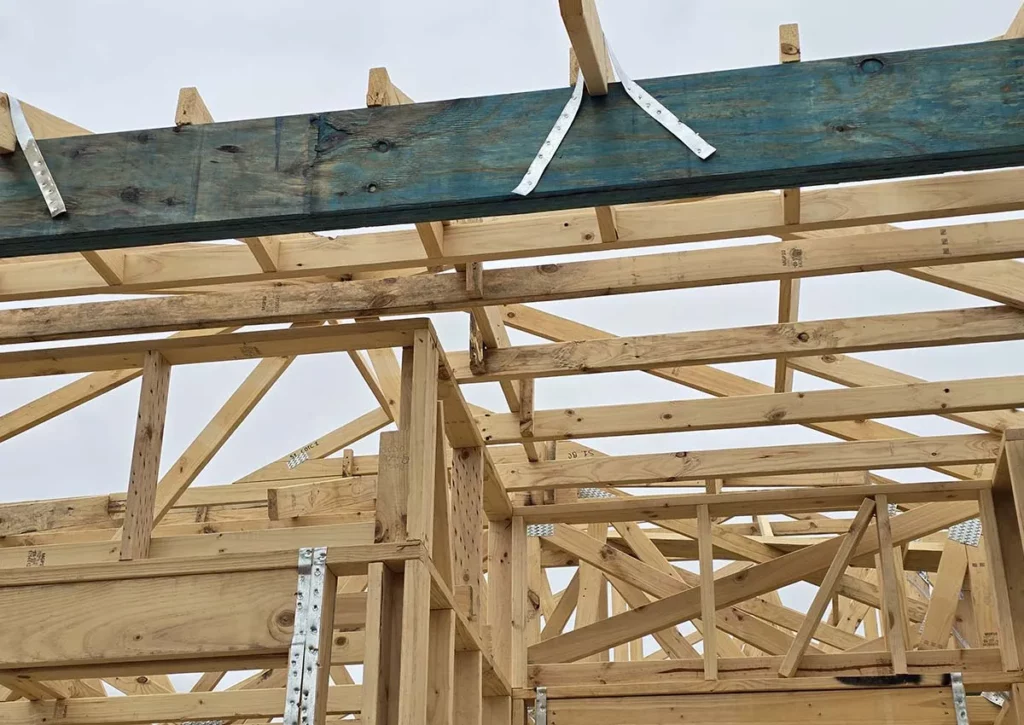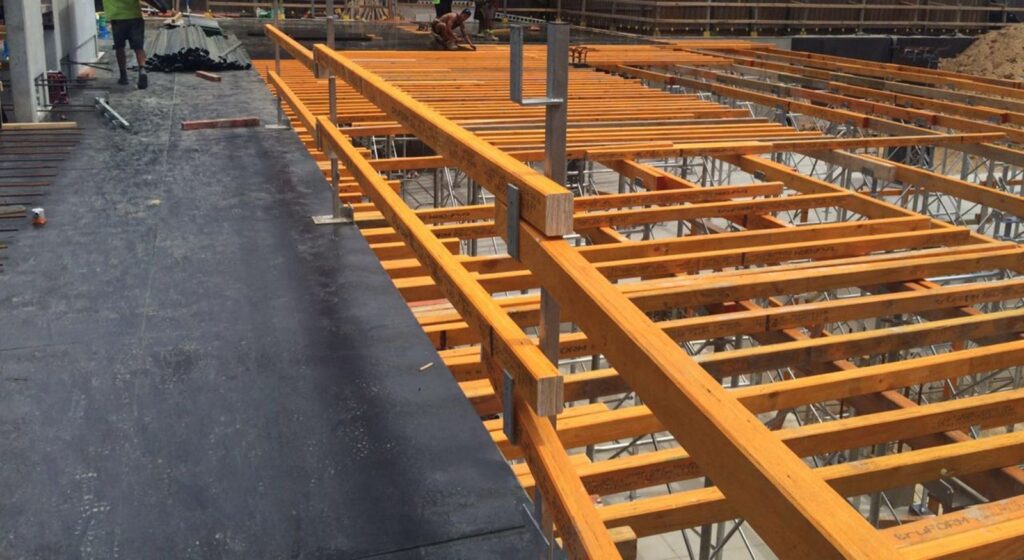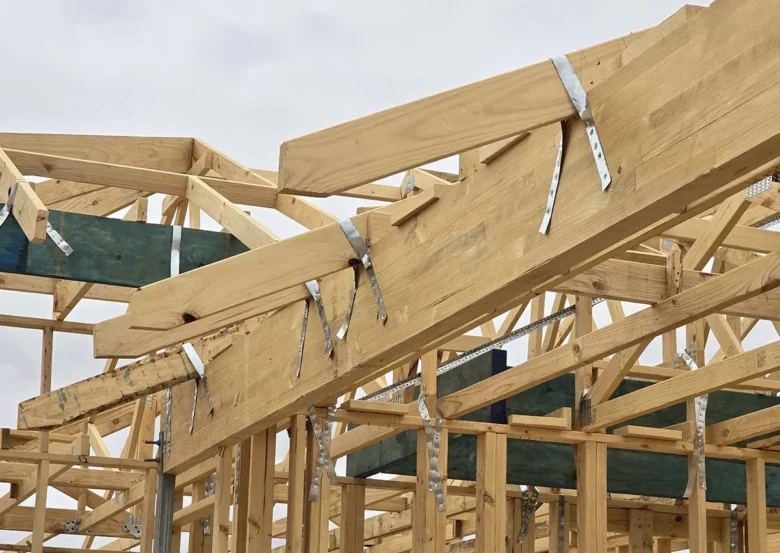LVL formwork timber is a construction material that offers unmatched strength and stability for your building projects. Whether you are working on a residential or commercial construction project, understanding the advantages of LVL formwork timber can help you achieve optimal results. In this article, we will delve into the details of LVL formwork timber, from its manufacturing process to its applications and environmental impact.
Understanding LVL Formwork Timber
Before we explore the strength and stability of LVL formwork timber, it is important to understand what exactly this material is and how it is manufactured.
LVL, which stands for Laminated Veneer Lumber, is a type of engineered timber. It is made by bonding multiple layers of thin wood veneers together using adhesives. The result is a high-strength timber product that offers consistent performance and durability.
LVL formwork timber is widely used in construction for its excellent load-bearing capacity and dimensional stability. Its engineered structure allows for longer spans and greater strength compared to traditional timber, making it a popular choice for formwork applications.
What is LVL Formwork Timber?
LVL, which stands for Laminated Veneer Lumber, is a type of engineered timber. It is made by bonding multiple layers of thin wood veneers together using adhesives. The result is a high-strength timber product that offers consistent performance and durability.
LVL formwork timber is known for its versatility and reliability in various construction projects. Its uniform composition and predictable performance make it a preferred material for formwork systems, providing contractors with a cost-effective and efficient solution for concrete construction.

The Manufacturing Process of LVL Formwork Timber
The manufacturing process of LVL formwork timber involves several steps to ensure its superior quality. It starts with selecting high-quality wood veneers, which are then layered and glued together. The layers are oriented in different directions, enhancing the material’s strength and resistance against warping and splitting. Once the adhesive is cured, the timber is cut into various sizes and profiles to suit different construction needs.
Quality control is a crucial aspect of the manufacturing process to guarantee the structural integrity of LVL formwork timber. Each batch undergoes rigorous testing to assess its strength, stiffness, and durability, ensuring that it meets industry standards and specifications for construction applications.
The Strength of LVL Formwork Timber
One of the key reasons why LVL formwork timber is highly favored in the construction industry is its exceptional strength. Let’s explore the factors that contribute to its strength and how it compares to other materials.
LVL formwork timber, also known as laminated veneer lumber, is a versatile and reliable material that plays a crucial role in modern construction projects. Its strength stems from a combination of factors, including the quality of the raw materials used and the innovative manufacturing processes involved in its production. The meticulous layering and bonding of wood veneers result in a final product that is not only strong but also durable, making it a popular choice for formwork applications.
Key Features Contributing to its Strength
LVL formwork timber exhibits impressive load-carrying capacity due to its engineered composition. The bonding of multiple wood layers ensures a homogenous material with consistent strength throughout. Additionally, the orientation of these layers creates a structure that resists bending and deflection, making it ideal for supporting heavy loads.
Furthermore, the manufacturing process of LVL formwork timber allows for customization based on specific project requirements. This flexibility in design and production ensures that the resulting timber components are tailored to meet the demands of various construction applications, enhancing their overall strength and performance on site. Read more about flexibility on https://health.ucdavis.edu/sports-medicine/resources/flexibility
Comparing LVL Formwork Timber Strength with Other Materials
In comparison to traditional solid timber, LVL formwork timber offers enhanced strength and dimensional stability. It outperforms traditional timber in terms of load-bearing capacity, allowing for larger spans and higher load applications. Additionally, when compared to other construction materials like steel or concrete, LVL formwork timber offers a more lightweight solution without compromising on strength.
When considering the environmental impact, LVL formwork timber also stands out as a sustainable choice. The manufacturing process minimizes waste and maximizes the efficient use of wood resources, making it an eco-friendly option for construction projects. Its strength, combined with its eco-conscious properties, positions LVL formwork timber as a top choice for builders and developers looking for high-performance and environmentally responsible building materials.
The Stability of LVL Formwork Timber
In addition to strength, LVL formwork timber is known for its stability. Let’s explore the factors that ensure its stability and the crucial role it plays in the construction process.
Factors Ensuring the Stability of LVL Formwork Timber
LVL formwork timber’s stability can be attributed to its dimensional accuracy and resistance to warping. The manufacturing process, which involves cross-lamination of wood layers, minimizes the natural tendencies of timber to expand or contract due to moisture or temperature changes. This dimensional stability ensures that the structure maintains its intended shape and does not compromise the safety of the building.
Furthermore, the high strength-to-weight ratio of LVL formwork timber contributes to its stability. This material can withstand heavy loads without deforming or bending, making it ideal for supporting concrete structures during the construction phase. The combination of dimensional accuracy and strength makes LVL formwork timber a reliable choice for builders and contractors seeking stability in their projects.
The Role of Stability in Construction
Stability plays a crucial role in the construction process as it ensures the structural integrity of the building. Using LVL formwork timber provides contractors and builders with the confidence that their structures will remain stable and secure over time. This stability not only enhances the safety of the occupants but also reduces the risks associated with maintenance and repairs in the long run.
Moreover, the stability of LVL formwork timber simplifies the construction process by allowing for precise and efficient assembly of formwork systems. The consistent dimensions and resistance to warping ensure that the formwork remains in place during concrete pouring, resulting in smooth and uniform surfaces. This level of stability not only improves the overall quality of the construction but also speeds up the workflow, saving time and resources for the project.
Applications of LVL Formwork Timber in Construction
The versatility of LVL formwork timber makes it suitable for various construction applications. Let’s explore how it is commonly used in residential and commercial construction projects.
Laminated Veneer Lumber (LVL) formwork timber is a popular choice in the construction industry due to its exceptional strength and durability. It is manufactured by bonding together thin wood veneers with adhesives to create a strong and reliable material for structural applications. LVL formwork timber is known for its consistent quality and resistance to warping, making it ideal for use in demanding construction environments.
Residential Construction Uses
In residential construction, LVL formwork timber finds extensive use in framing applications. It is commonly used for beams, joists, and headers, providing structural support for floors, walls, and roof systems. Its strength and stability make it a reliable choice for load-bearing elements in residential buildings.
Additionally, LVL formwork timber is often used in the construction of custom millwork and cabinetry in residential properties. Its smooth and uniform surface allows for easy finishing, making it a versatile material for interior design elements such as shelves, mantels, and countertops.
Commercial Construction Uses
In commercial construction, LVL formwork timber offers a wide range of applications. It is used in the construction of large-span roofs, mezzanine floors, and structural framing. The ability of LVL formwork timber to span longer distances enables more open and flexible interior spaces for commercial buildings such as warehouses, shopping centers, and office complexes. Click here to learn more about distances.
Moreover, LVL formwork timber is a sustainable choice for construction projects, as it is often manufactured from fast-growing plantation timber species. This eco-friendly aspect appeals to environmentally conscious developers and architects looking to reduce the carbon footprint of their buildings while maintaining high structural performance.

The Environmental Impact of Using LVL Formwork Timber
As sustainability becomes an increasingly important consideration in construction, evaluating the environmental impact of materials like LVL formwork timber is crucial. Let’s explore how LVL formwork timber contributes to sustainability and its carbon footprint.
Sustainability of LVL Formwork Timber
LVL formwork timber is considered a sustainable construction material. The manufacturing process ensures efficient utilization of timber resources as it uses smaller, fast-growing trees. This reduces the pressure on old-growth forests and promotes responsible forest management. By carefully selecting the trees used in the production of LVL formwork timber, we can ensure that the ecological balance of our forests is maintained, allowing them to thrive for generations to come.
But the sustainability of LVL formwork timber doesn’t stop there. The timber itself can be recycled or repurposed, further minimizing waste and environmental impact. This means that at the end of its lifespan, LVL formwork timber can be transformed into new products, reducing the demand for virgin timber and extending the life cycle of this valuable resource.
LVL Formwork Timber and Carbon Footprint
In terms of its carbon footprint, LVL formwork timber offers significant advantages compared to materials like steel or concrete. Wood products, including LVL formwork timber, store carbon dioxide throughout their lifespan, helping mitigate greenhouse gas emissions. This means that by choosing LVL formwork timber over other materials, builders can actively contribute to reducing the overall carbon footprint of the built environment.
Furthermore, the manufacturing process of LVL formwork timber requires less energy compared to the production of steel or concrete. This energy efficiency not only reduces carbon emissions but also helps conserve valuable natural resources. By opting for LVL formwork timber, builders can make a positive impact on the environment without compromising on structural integrity or performance.
In conclusion, LVL formwork timber provides exceptional strength and stability for various construction projects. Its engineered composition and manufacturing process ensure consistent quality and performance. From residential to commercial applications, LVL formwork timber offers reliable support and flexibility.
Moreover, its sustainability and low carbon footprint make it an environmentally conscious choice for builders and contractors. By using LVL formwork timber, construction professionals can contribute to a more sustainable future, where buildings are not only strong and durable but also environmentally friendly. So, embrace the strength and stability of LVL formwork timber in your builds and join the movement towards a greener and more sustainable construction industry.

